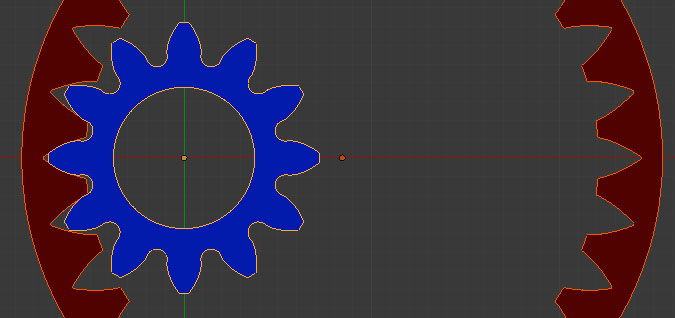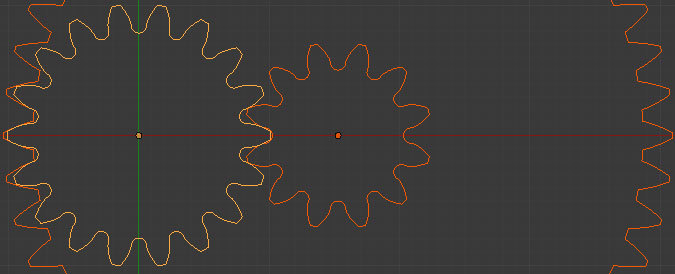This calculator allows you to create a perfectly meshing involute internal/external gear pair
instantly. Enter your standard gear parameters (module, number of teeth, profile shifts),
press a button, copy and paste the generated Python script to Blender, and your two gear outlines
are ready. The calculator will also check the generated outlines for overlaps, and advise you to use a positive profile
shift if an overlap does occur.
Additionally, if you are designing a planetary mechanism, this calculator will assist you in calculating the number of
teeth and profile shift for the 3rd (sun) gear.

The outlines of a meshing involute internal/external gear pair can be fully defined by the number of teeth on both gears,
module, profile shift and pressure angle. A positive profile shift is usually required to avoid an
overlap between the gear outlines. If the specified profile shift is insufficient, the calculator displays a warning.
The calculator generates a Python script that creates both gear outlines based on the aforementioned parameters.
For a helical gear, the desired Helix Angle (β) and Gear Width (W) must also be specified for the calculator to compute
the twist angles for both gears. These angles can be used with Blender's Simple Deform modifier (Twist)
to instantly turn straight gears into helical (or herringbone) ones.
The optional Extra Tip Vertex Position parameter (v), if set to a non-zero value, creates an extra vertex on each side of all the teeth
close to the tooth tip, as shown below. This allows the Subdivision Surface modifier to be applied to the gears
while preserving the geometry of the tooth. Without this extra vertex, the modifier makes the tooth tips too rounded.
The closer this value to 1, the closer the extra vertex is to the tooth tip. Normally, a value between 0.9 and 0.99 should be used.
| v = 0 | | v = 0.9 |
 | |  |
If the specified number of teeth for the external and internal gears leave room for a 3rd (center, or sun) gear with 6 or greater teeth,
the calculator will automatically calculate the number of teeth and profile shift for it so you can
have a fully functional planeary mechanism.
